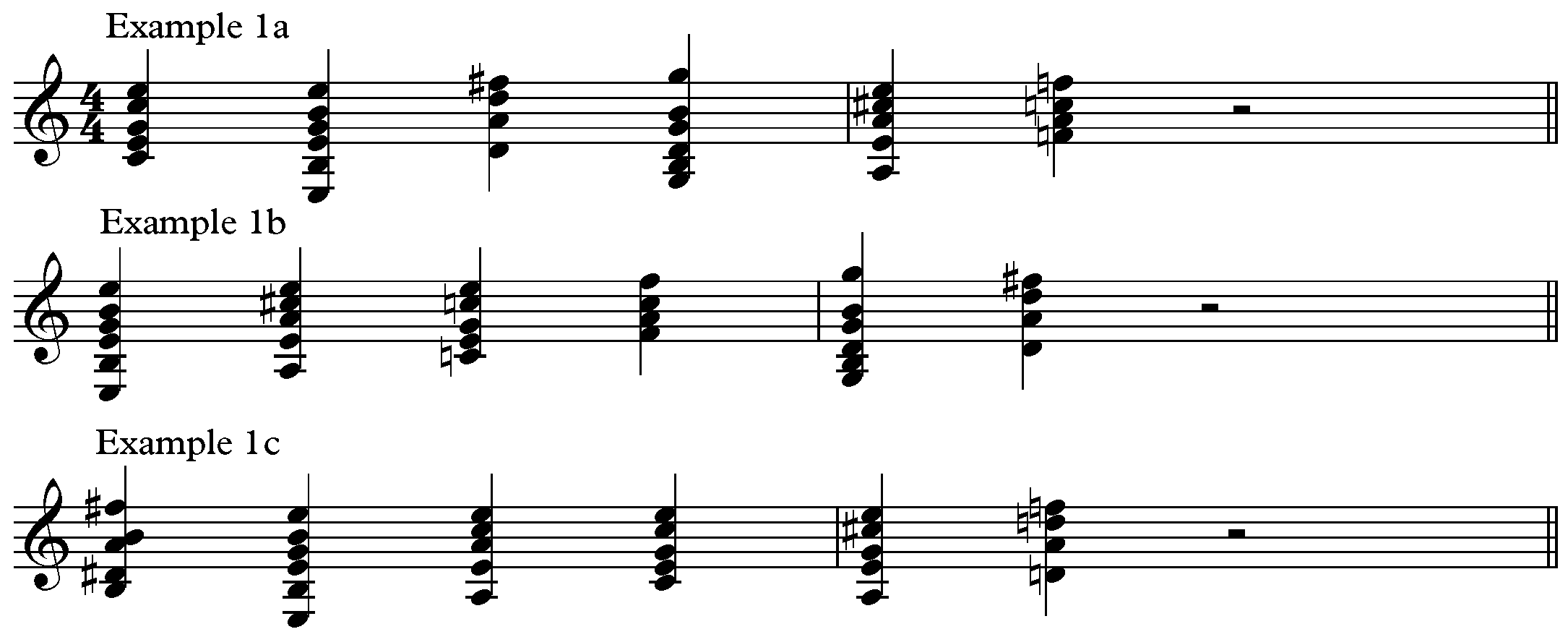Sight Reading Part 9 – Reading Full Chords
By Rob Thorpe
After exploring a couple of different reading situations, we’re returning to focus on reading chords. This is usually the most difficult and feared part of reading notation amongst guitarists. The problem is twofold: Firstly, we’re making more work by having to recognise several pitches instead of just one, but secondly and more importantly, there are lots of possible ways to play most single notes on the guitar and with which finger, but when a chord is required these possibilities are greatly reduced, and with reading full chords there is often only one possible way to play them correctly.
In parts five and six closed position triads were introduced. If you missed this, then it would be strongly advisable to brush up on those before carrying on with reading full chords, or even just refresh them anyway by reading through the exercises.
Much of reading notation on guitar is about recognising shapes and patterns on the stave and associating them with shapes on the fretboard.
Example 1

This example may look a bit dense, but they are all open chords that you’ll certainly be familiar with. The challenge is to identify the root note and the layout of notes above it. For example C, G and F type chords all have a closed triad at the bottom, whereas E, A and D shapes have a root, fifth, root arrangement. The difference between these two groups is visible at a glance, so you’ve already halved the options you’ve got to choose between.
The three figures use the same chords in different orders so you can have several attempts at working through the process. Learning to recognise these chords on paper will avoid the embarrassment on a gig of when reading full chords from a chart, only to find you just need to strum G and C!
Example 2

This time we’re doing the same thing but with barre chords. The same principle of identifying the lowest note in the chord and then the pattern of intervals above it will help. Recognising the overall density or shape of a six note or five note chord will help to determine where it should be played too.
Regarding whether the chord would be major or minor can be determined by the key signature and a bit of theory knowledge. For example, if you are playing in a signature of 1 # then a notated chord with no accidentals starting on G is likely to be major.
Example 3

Finally we’re complicating things by adding a capo into the mix. Sometimes on musical theatre charts the capo won’t be specified, usually because the music has been prepared by a keyboard player, but the music requires one to get a full ringing sound, which will only become apparent after a few attempts at reading through without one.
However, the capo position is specified in these examples (you’re welcome!) so it is a case of repeating the approach of example one in recognising the shape of familiar open chords. Before playing each figure, perhaps refresh your memory of what each chord each shape actually is when the capo’s transposing effect has been applied.
| Read Previous Lesson |
“The artists you work with, and the quality of your work speaks for itself.”
Tommy Emmanuel
© Copyright Fundamental Changes Ltd 2025
No.6 The Pound, Ampney Crucis, England, GL7 5SA
